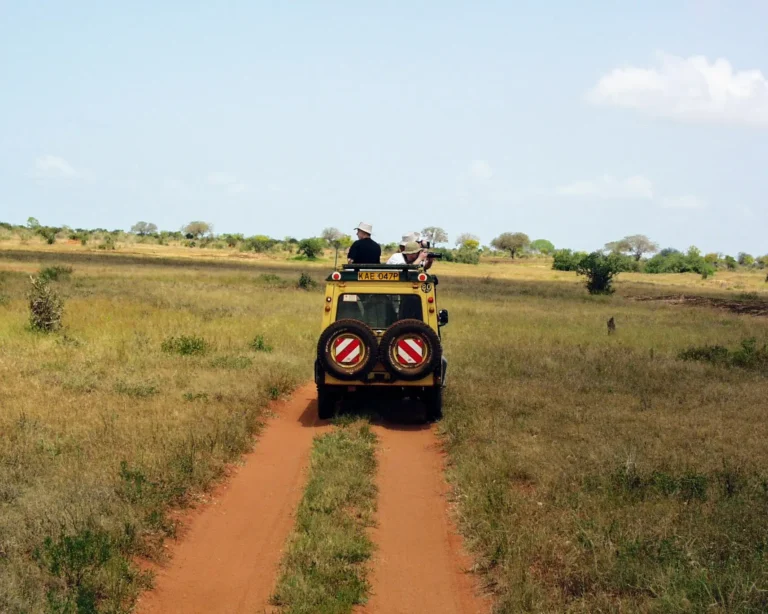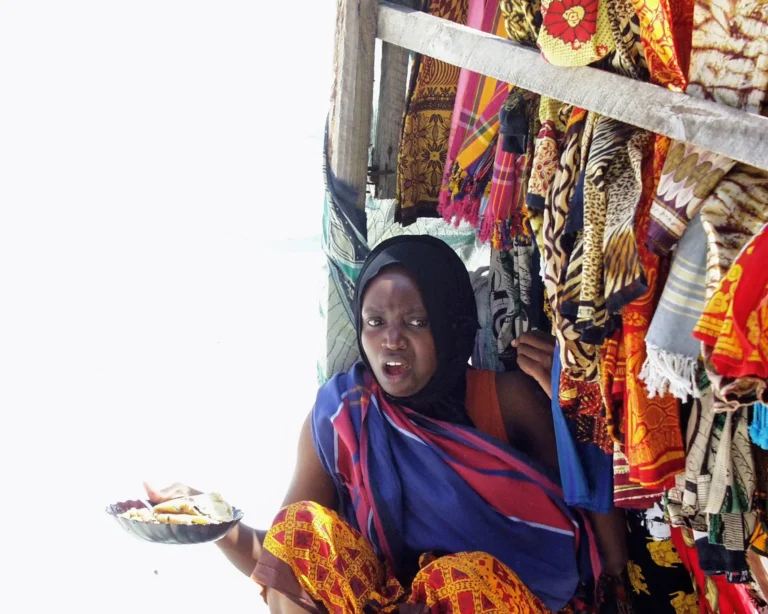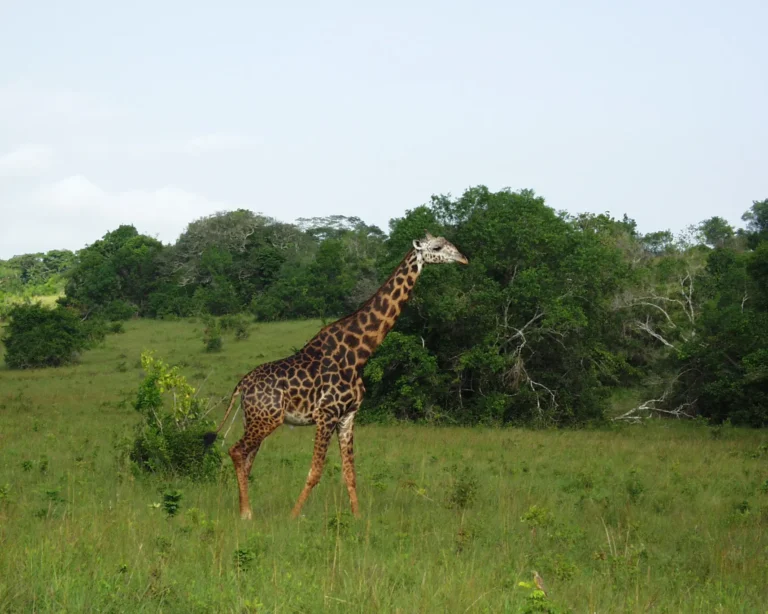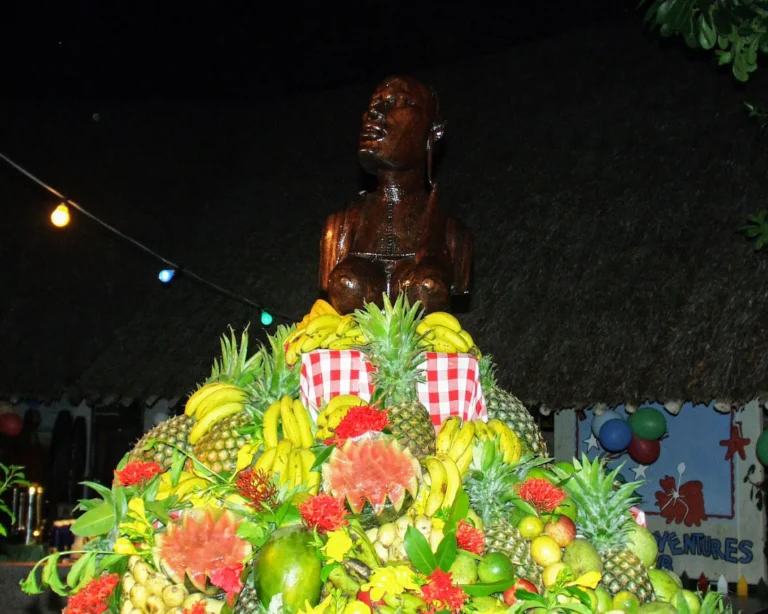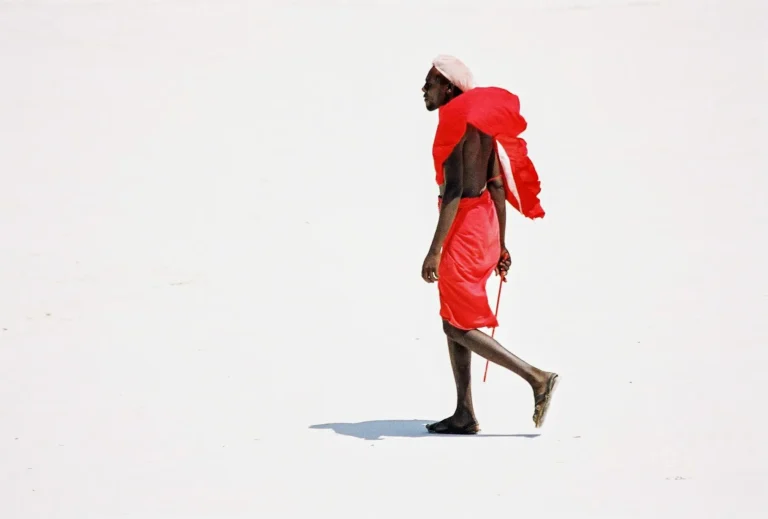After New Year’s Eve, we woke up very early on January 1st. The Southern Cross tour bus picked us up at 7 a.m. (we had even had breakfast before that), and our first authentic safari began. This was quite a long drive. The driver mentioned that we were driving on the Mombasa-Nairobi highway, the most significant route in Kenya. The road was not of good quality, and neither was the bus. The driving was quite shaky.
On the way, we stopped at a small shop where there was an excellent opportunity to buy wooden souvenirs (wood carvings and wooden animals). The next stop was at the gates of East-Tsavo National Park.
Tsavo East National Park is one of the oldest and largest national parks in Kenya, at almost 12 thousand square kilometers of pure wilderness, incorporating savanna, ranges and hills, acacia forest, and an extensive river system. The park was opened in 1948. Three main gates can access the park. We entered from the Bachuma gate. At the entrance, we were supposed to buy safari hats. At the gates, we also changed the vehicle. Our happy group of eight people now drove a Range Rover, an authentic safari vehicle.
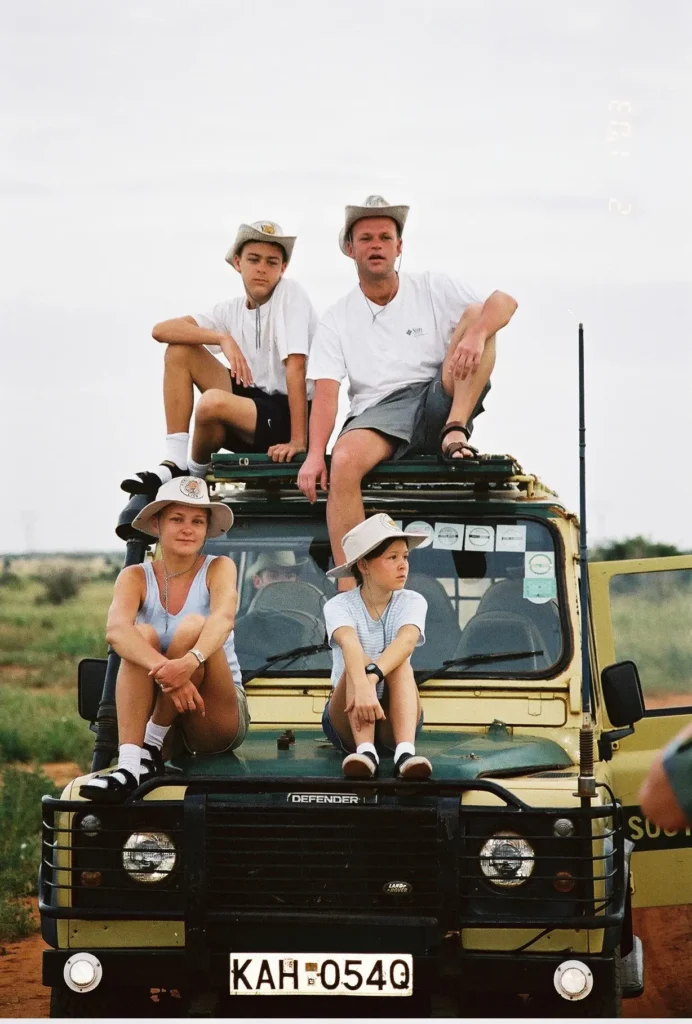
First, we drove towards Satao Camp. The drive was over bumpy, brick-red dirt roads. On the way, we saw so many animals. First were zebras and then antelopes. We also saw several interesting birds, as Tsavo is a birdwatcher’s paradise with numerous species of weavers, hornbills, sunbirds, rollers, and raptors. In addition to the animals and birds, we enjoyed the smell and sound of the savanna in our open safari car.
Arrival at Satao Camp was delightful. The host, Bob, welcomed us with fresh juice and wet towels; both were refreshing. After that, we were guided to the tents. Those were the most luxurious tents we have ever seen—quite large, with a thatched roof overhead and a veranda. Inside the tent, we had lovely beds and also carpets on the floor. There was also a bathroom at the back with stone flooring, a marvelous stone sink, ample towels, and soap. The shower area was gorgeous. In the shower, it was possible to use solar-heated water at 6 p.m. each night. The shower head sprayed water on the floor and drained out. This was an exciting experience.
After checking into the tents, we had lunch outside, under the tree in the middle of the savanna. It is impossible to describe the smell and the voices we experienced in the camp or on the safari; they were magnificent!
In the late afternoon, we went on a game drive with a visit to Aruba Dam and its surroundings. We drove about two and a half hours. Seeing the elephant family walking at sunset towards Mount Kenya in the savanna was really beautiful.
In the evening, we had dinner, sat outside the tent, and had some wine. At one point, we realized that antelope cattle were just 10 meters away from us. They had come there to be protected from lions.
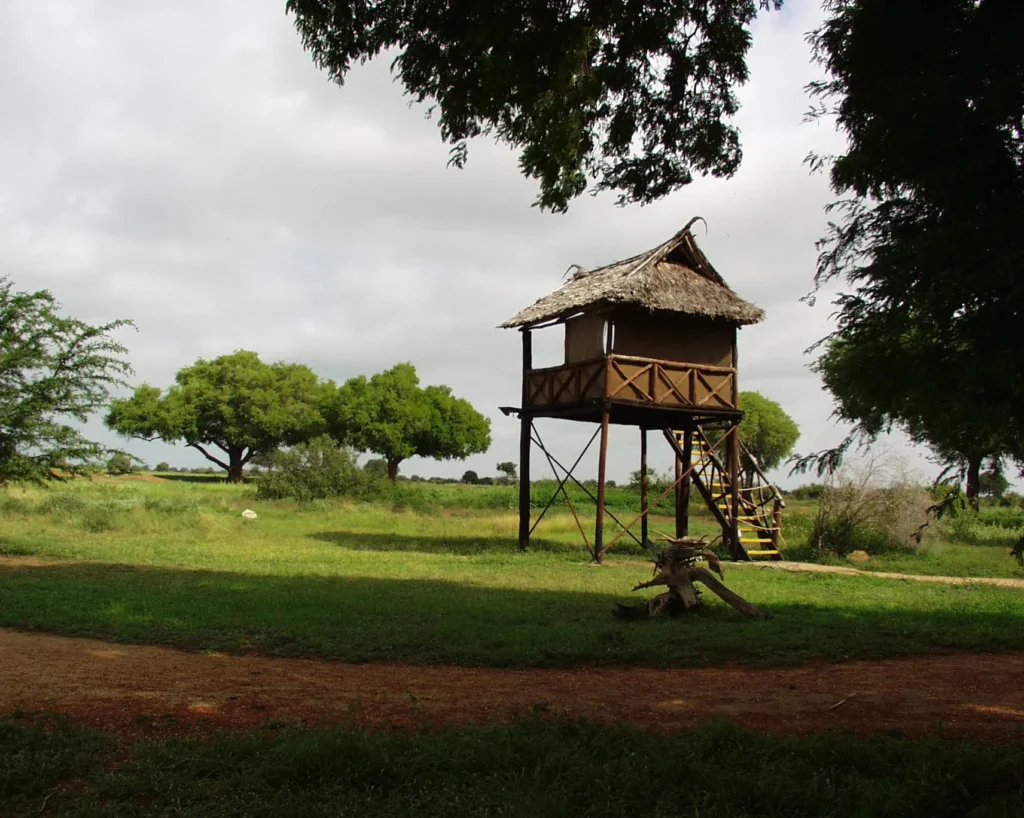
We stayed in Satao Camp for a night and had a game drive early morning. During that drive, our safari vehicle broke down in the middle of the savanna. Our driver called for help and went along with another driver. We were alone in the savanna with a broken vehicle for half an hour.
During all the safaris in Tsavo, we saw so many animals that it is not easy to remember all the names—elephants, gazelles, impalas, hippos, cheetahs, dik-diks, zebras, giraffes, and many different kinds of birds, including ostriches and others. It was fabulous to see the animals in their natural habitat, grazing, drinking at the waterhole, dusting them off, and just being free and wild.
Tsavo is the largest park in Kenya, and it seemed that we covered only a tiny corner of it. Our trip to East Tsavo Park was perfect, but maybe it was too short. The whole safari to Tsavo East was a fantastic experience—we hardly believed what we saw and smelled during those two days.
The story continues at Shimba Hills National Reserve.
